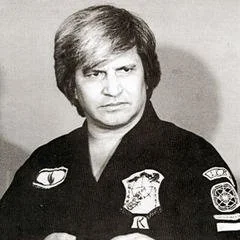
KENPO KARATE
TAUGHT BY MATT TREJO
Monday and Wednesday: BullyProof Kids Self Defense Class 5:00pm-6:00pm
The History and Evolution of American Kenpo Karate
American Kenpo Karate is a modern martial art system rooted in practicality, logic, and adaptability. Unlike traditional martial arts, which often adhere to rigid forms and practices, American Kenpo evolves to meet the demands of contemporary street combat and survival scenarios. This system emphasizes explosive speed, power, and efficiency, with a strong focus on practical self-defense techniques and strategies. Designed to neutralize threats quickly, it integrates elements of traditional martial arts such as Karate, Kung Fu, Judo, and Jiu-Jitsu with modern combat principles, making it a versatile discipline that accommodates all ranges of combat, including strikes, grappling, and ground defense.
The system is divided into several core components, including Basic Fundamentals, Self-Defense, Forms, Sets, and Sparring. Students begin with foundational techniques like stances, strikes, and kicks and progress to advanced applications like throws, joint locks, and weapon defense. This structured approach ensures that practitioners develop agility, coordination, and reflexes while enhancing their overall physical and mental health. The adaptability of Kenpo allows each student to tailor the art to their unique abilities and preferences, ensuring accessibility for individuals of all ages and skill levels.
Edmund "Ed" Parker, the founder of American Kenpo Karate, is credited with revolutionizing the art and introducing it to the U.S. mainland. Growing up in the rough streets of Hawaii, Parker recognized the limitations of traditional martial arts for real-world combat. He studied under William Chow, combining his knowledge of Kenpo with elements of boxing, Judo, and Jiu-Jitsu. Parker’s scientific approach emphasized the analytical study of motion, physics, and geometry, making Kenpo a "science of fighting" that adapts to the dynamics of every confrontation. His teachings focused on understanding the interplay of motion, reaction, and positioning, ensuring that students could instinctively respond to threats in real time.
Parker’s influence extended far beyond his innovative martial arts techniques. He founded the International Kenpo Karate Association, fostering the growth and dissemination of the art worldwide. His vision of continuous learning and cross-training with other disciplines encouraged a mindset of unlimited potential and growth. Even after his passing in 1990, Parker’s legacy endures through countless practitioners who continue to study and evolve American Kenpo as a dynamic, practical, and scientific martial art system.


